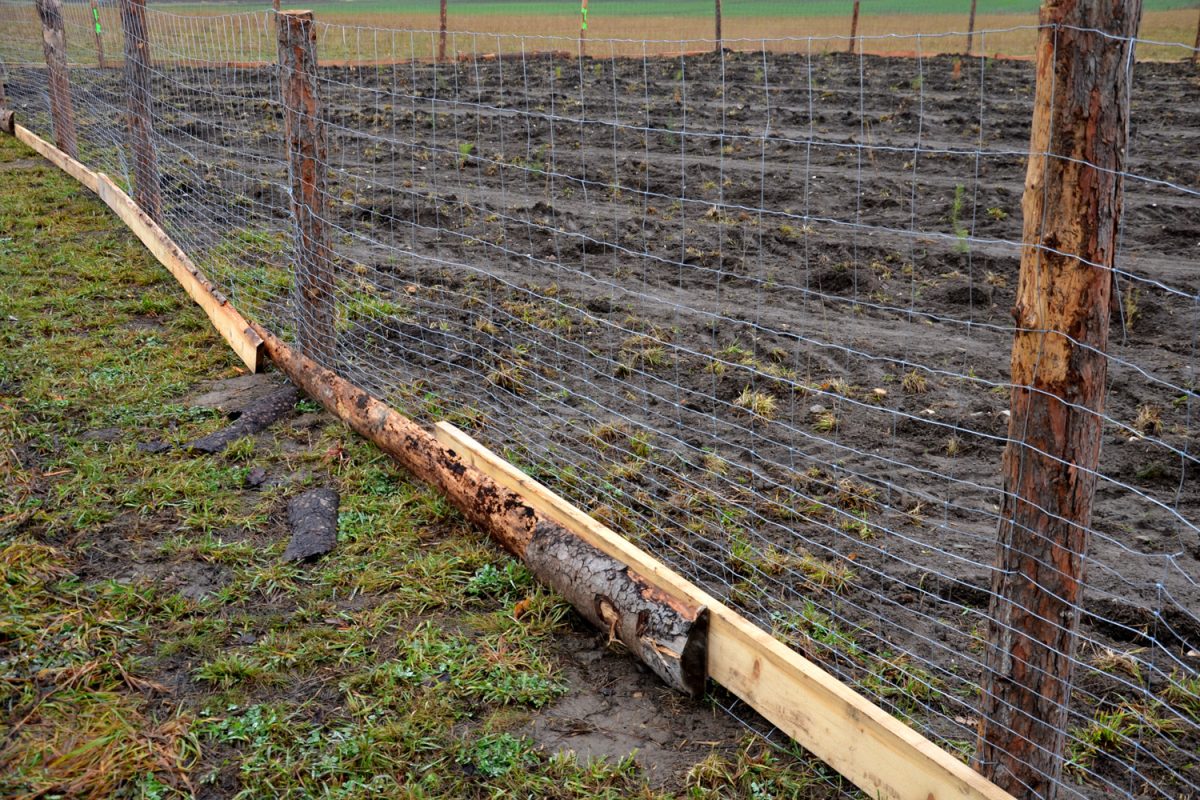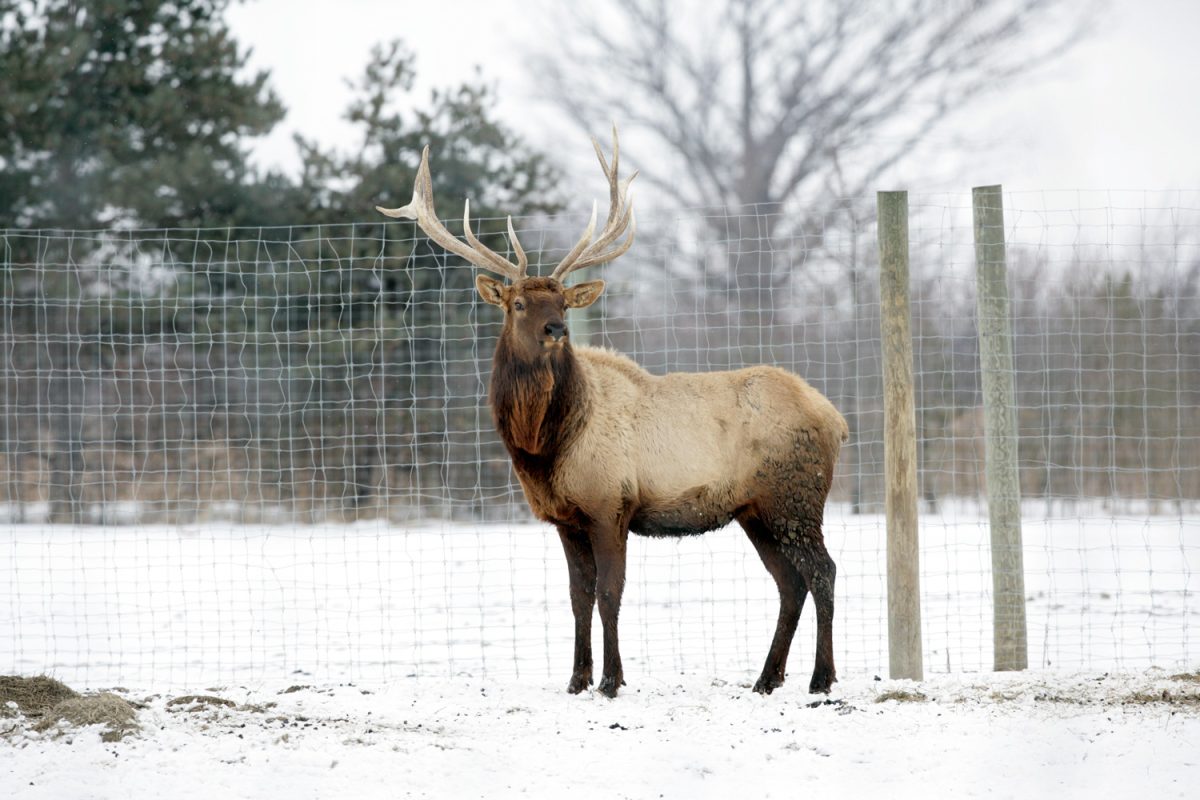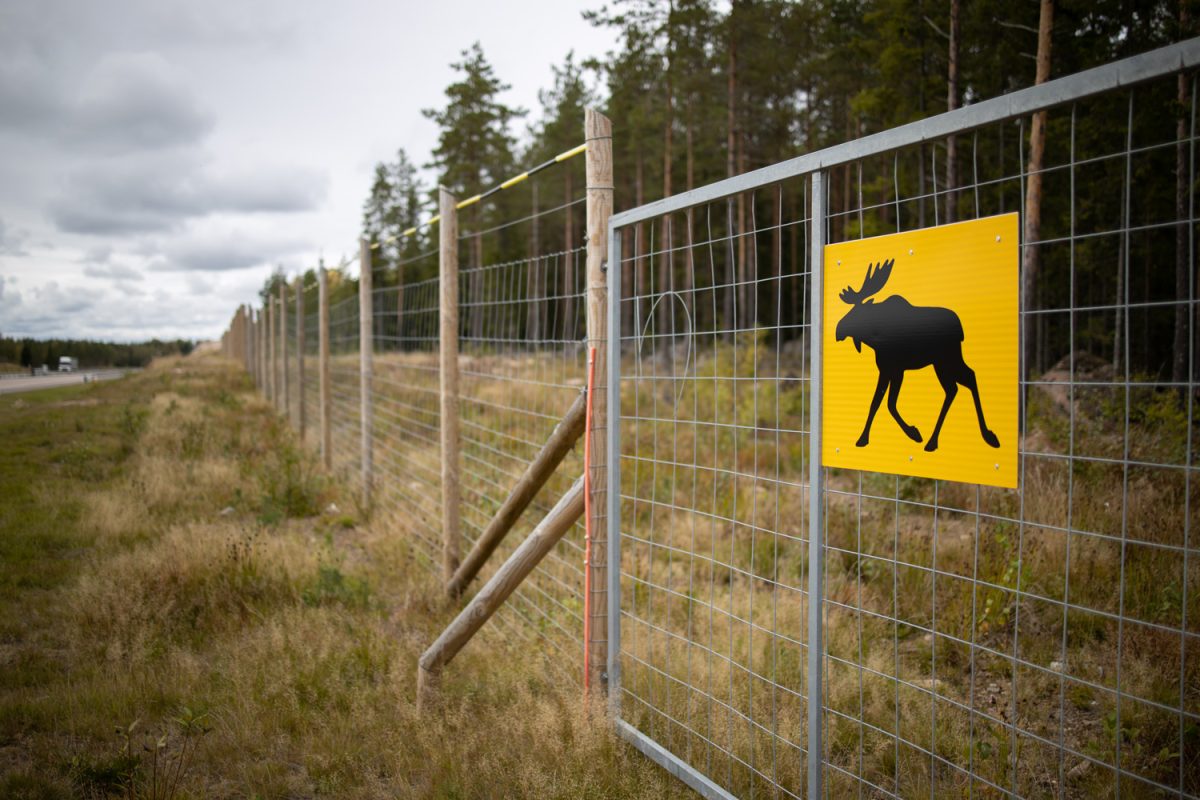Deciding the height of your deer fence can be tricky. If it falls short, the deer can easily go over it. And if it's too tall, it costs more. So, how tall should a deer fence be? We gathered useful information for you and here is what we discovered.
The ideal height for a deer fence is between 7.5' and 8' tall. These fence heights prevent deer from jumping over the fence and into the garden.
Read on as we discuss the best materials you should use for your deer fence. We'll cover how strong your fence should be and characteristics a deer fence should have to be most effective.
![Brown deer in green plastic mesh fence - How Tall Should A Deer Fence Be? [Incld Best Materials To Use]](https://fencefixation.com/wp-content/uploads/2022/06/Brown-deer-in-green-plastic-mesh-fence-How-Tall-Should-A-Deer-Fence-Be-Incld-Best-Materials-To-Use-800x1200.png)
Best Deer Fence Materials To Use
The most commonly used fencing materials are metal and plastic.
Metal

For many years, wire-mesh deer fences, composed of heavy-gauge metal and fastened to posts, were the standard.
Here are the pros and cons you need to consider before choosing this fencing material:
Pros
- It is sturdy and efficient.
- The most expensive ones are covered with black polyethylene, making them almost invisible.
Cons
- The less expensive barriers do not fit in well with the surroundings.
- Almost all types are relatively costly.
Plastic

Polypropylene-mesh fencing is a type of plastic fencing that is now popular. It's similar to wire mesh in that it's fastened to vertical poles to form a barrier.
Pros
- It is less expensive.
- The higher-end types are more effective since their breaking load is larger, but they cost more.
- The mesh is practically imperceptible.
Cons
- It is not durable compared to metal types.
Factors To Consider In Choosing A Deer Fence

You must look out for these factors when deciding which deer fence is best for you:
Deer Can Jump High
Deer can run quite fast, as we all know, but the athletic animal can also jump very high. It is an important consideration when determining fence height. Deer can jump an incredible 8 feet on average, so the fence height should be slightly higher.
Although 7-foot fences are commonly available, you can increase the height somewhat to be on the safe side. Choosing an 8-foot-high metal or polypropylene mesh fence can effectively protect your property from deer invasion.
Deer Can Force Their Way Through
It is a misconception to believe that deer will only attempt to pass the fence by jumping over it. Even though the big animals enjoy jumping, they take every opportunity to push their bodies beneath the fencing to access the forbidden region.
There must be no space between the fence and the ground to prevent it. When erecting polypropylene fencing, leave sufficient slack that spills over the ground in front of the fencing so that stakes may be used to secure it.
Fencing Needs Ongoing Maintanance
The fencing provides a much-needed barrier to deer movement, but you must keep an eye on its condition to discover and fix any damage as soon as possible.
Compromising with the barrier defeats the point of installing a fence because deer are intelligent enough to recognize breaches and navigate their way through them.
How Strong Should Your Deer Fence Be?
Depending on your use, a deer fence should have a breaking strength of 400 pounds to 950 pounds or more.
You can follow these guidelines in determining how strong your deer fence should be:
| Fenced Area | Minimum Fence Strength |
| smaller regions or locations that prevent deer from roaming | 400 lb/ft² |
| areas up to 350 linear feet | 650 lb/ft² |
| areas 350 linear feet or longer | 750 lb/ft² |
| areas 1,000 feet or longer | 950 lb/ft² |
Deer fencing having a breaking strength of 950 pounds or more, in general, can reject any size deer running at any speed. This usually occurs when deer accidentally run into a fence. Your fence strength should be directly proportional to the fence length.
Tips When Installing a Deer Fence
Here are some tips to help you build the best deer fence for your property.
Tip #1: High Fencing
Deer are incredibly athletic animals, capable of leaping great distances. To keep them from jumping over a single, upright fence, experts agree that it must be at least eight feet tall.
Tip #2: Broad Fencing
Erect two shorter fences, one inside the other, with a space of five or six feet between them. This is a good alternative because, although deer can jump high, they cannot span great depth with one high jump.
Deer also have weak eyesight. So a double barrier is an impossibility for them to overcome. You can also achieve this "look' by slanting a tall fence outward; it will appear wider and more imposing from the deer's viewpoint.
Tip # 3: Secure Fencing to the Ground
Believe it or not, deer will even attempt to crawl beneath a fence! Anchor the fencing material to the ground between posts; otherwise, deer will find a loose area to slink underneath.
Tip #4: Narrowly Space Fence Posts
Keep sturdy fence posts spaced narrowly, to strengthen the fencing between posts. If posts are far apart, the fence is strained, and it also increases the probability of the fence sagging between the posts. The recommended space between posts is 8 feet to 12 feet.
Tip #5: Attach High Visibility Ribbons

Deer sometimes struggle to notice black plastic or welded wire fences. It can actually deter deer to make the fence noticeable. Hang warning ribbons along the fencing, at least four feet high or variable heights so the deer don't see the exact top or bottom fence dimensions.
What Are Effective Deer Fences?
Whether a single deer or a herd of deer appears in your backyard, erecting a suitable fence is critical to protecting both the animals and your property.
Here are some effective deer fences that you might try:
Heavy-Duty Fence
Deer are less likely to try to enter your landscape when they can't see what's beyond the barrier, so solid fences, such as those built of wood, are beneficial.
While a strong fence of 6 feet in height is sufficient for a deer seeking food, a deer attempting to flee a predator will attempt to leap over it.
Electric Fence
An electric fence keeps deer out of your yard and sends them a message not to come back. However, you should verify with your locality to see if electric fences are permitted.
A single wire strand positioned 30 inches above the ground is sufficient for a small deer problem, but two to three strands are better suited for larger numbers of deer. However, if children or pets are around, electric fences should be avoided.
Slanted Fence
Deer can jump over a very tall fence, although their jumps aren't very long. A slanted fence can solve your problem if installing a fence as tall as 8 feet does not work for your landscape. Instead, construct a 6-foot fence with a 45-degree slope and an outward slant.
Deer will attempt to walk under and through these post-and-wire mesh fences. They are unlikely to attempt a jump, though, because they are aware of the physical barrier.
Mesh Fence
A fence made of plastic mesh blends in with its surroundings for a less noticeable choice. This netting material is notable for both its capacity to keep deer out and its long-term durability.
Netting is sold by the foot, requires post attachment, and can endure for up to 15 years. Because deer have poor depth perception and may not notice the barrier, a tall fence of around 8 feet is required.
Conclusion
Your deer fence should be at a height where it's not too tall or too short. Having it stand at 7.5' to 8' is enough to keep deer away from your property.
Aside from the fence height, you should also consider the slack and repairability of your fencing material. In addition, a deer fence should be strong enough to hold the force at which a deer will come at your fence.
Before you leave, if you want to learn more about pressure-treated fences, you can check these articles on this page:
Should Fence Posts Be Pressure Treated? [And How To Prevent Rotting]

![A modern middle class home with its backyard being enclosed for privacy by a new, modern style white vinyl fence. Green grass, and blue sky is in the background., Can Vinyl Fencing Withstand Wind? [Plus 7 Windproofing Tips!]](https://fencefixation.com/wp-content/uploads/2022/06/A-modern-middle-class-home-with-its-backyard-being-enclosed-for-privacy-by-a-new-modern-style-white-vinyl-fence.-Green-grass-and-blue-sky-is-in-the-background-600x400.jpg)
![A white vinyl fence running across a yard on spring day with blue sky and trees in the background, Can Vinyl Fence Touch The Ground? [Plus Tips On How To Close The Gap]](https://fencefixation.com/wp-content/uploads/2022/06/A-white-vinyl-fence-running-across-a-yard-on-spring-day-with-blue-sky-and-trees-in-the-background-600x400.jpg)
![A grass meadow and a small fence next to a small pond, How Long Does Split Rail Fence Last? [And How To Prolong Its Life]](https://fencefixation.com/wp-content/uploads/2022/06/A-grass-meadow-and-a-small-fence-next-to-a-small-pond-600x400.jpg)